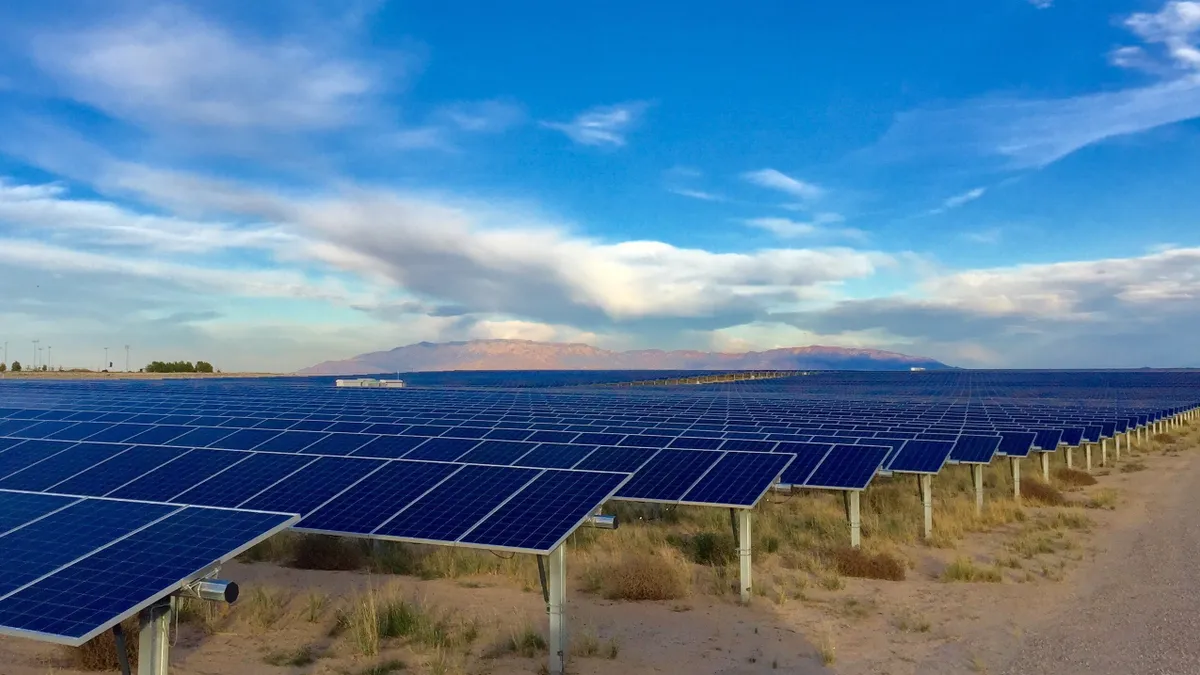Dive Brief:
- Kit Carson Electric Cooperative in New Mexico has announced plans to serve its 29,000 customers with all renewable power within six years, but needed a big decision from federal regulators and help from a solar developer to bring the concept together, PV Magazine reports.
- A June decision from the Federal Energy Regulatory Commission (FERC) upheld cooperative power providers' rights to purchase energy from independent renewables generators, nixing the terms of a contract Kit Carson had signed with Tri-State Generation and Transmission.
- FERC's decision, according to PV Magazine, opened the door for Guzman Renewable Energy Partners to purchase Kit Carson's contract for $37 million and agree to develop solar facilities in excess of 30 MW for the cooperative.
Dive Insight:
Development of 30 MW of solar may not be big news, but the events leading up to Kit Carson Cooperative's all-solar move were an unusual confluence of events. Freed from a restrictive contract that limited the local renewable power it could buy, a solar developer stepped in to meet the co-op's renewables goals.
According to a Solar Deployment Plan published by the coop, Kit Carson currently has about 5 MW of solar energy and will need to acquire roughly 30 MW more by 2023. The capacity would be constructed at multiple sites in the cooperative's territory, each roughly 1 MW in size.
"This size of array is more feasible in finding the ideal location due to the smaller size of property that is required," according to the deployment plan. "Different strategies related to storage will be reviewed to determine the best technology and utilization that will enhance overall solar performance."
The "best option," according to the plan, is to enter into power purchase agreements for third party developers to construct and operate the facilities.
FERC’s decision this summer, affirming the right of cooperatives’ to purchase electricity from independent generators, bolsters the prospects for distributed energy in rural areas. There are almost 1,000 electric cooperatives in the U.S., and many are seeking to build out more local, renewable energy. In some instances, that switch comes at the expense of the generation and transmission utilities that serve them.















